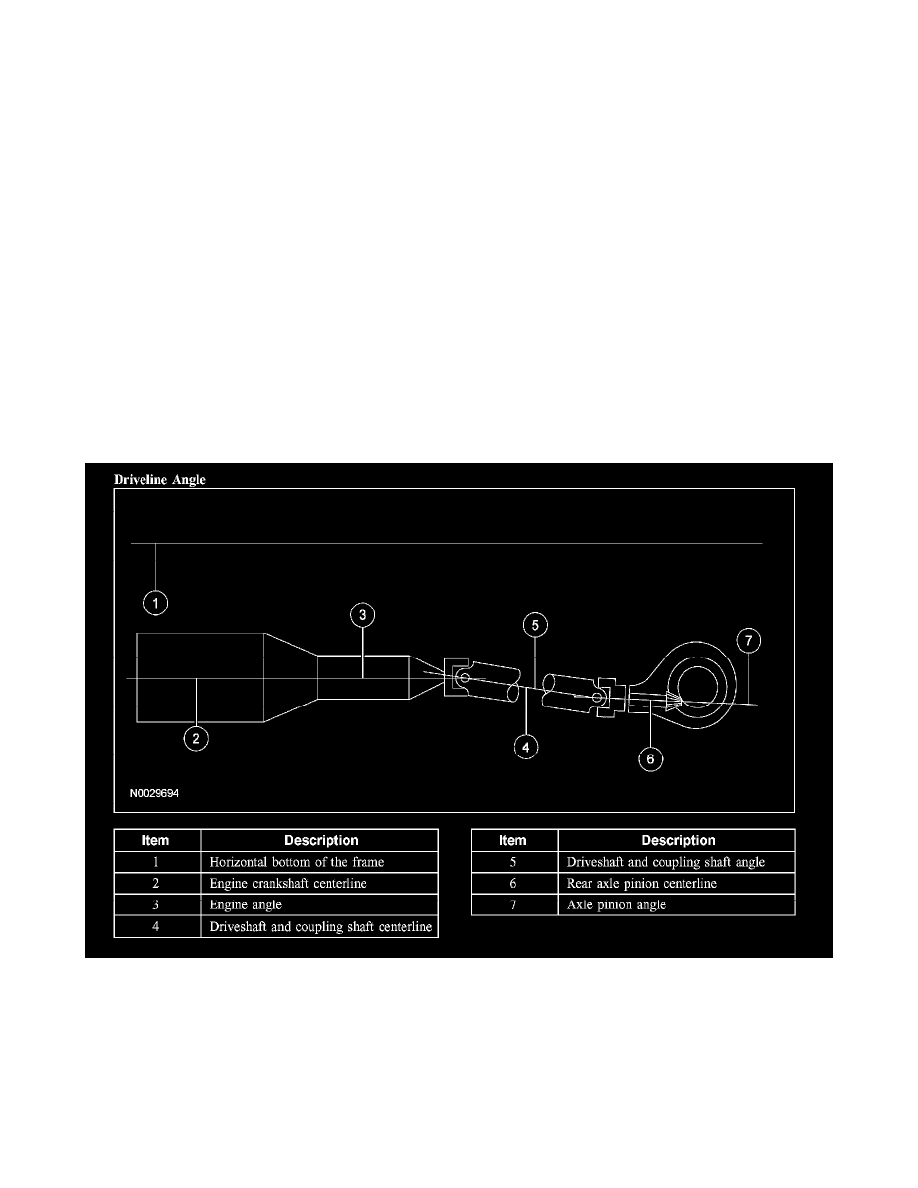E 250 V8-4.6L VIN W (2006)

Front Steering Knuckle: Testing and Inspection
Analysis of Vibration
WARNING: A vehicle equipped with a (Traction-Lok(R)) differential will always have both wheels driving. If only one wheel is raised off
the floor and the rear axle is driven by the engine, the wheel on the floor could drive the vehicle off the stand or jack. Be sure both rear
wheels are off the floor.
Few vibration conditions are caused by the rear axle. On a vibration concern, follow the diagnosis procedure in Vehicle/Testing and Inspection unless
there is a good reason to suspect the axle.
Tires
WARNING: Do not balance the wheels and tires while they are mounted on the vehicle. Possible tire disintegration/differential failure can
result, causing personal injury/extensive component damage. Use an off-vehicle wheel and tire balancer only.
Most vibration in the rear end is caused by tires or driveline angle or imbalance.
Vibration is a concern with modem, high-mileage tires if they are not true both radially and laterally. They are more susceptible to vibration around
the limits of radial and lateral runout of the tire and wheel assembly. On a vibration concern, follow the diagnostic procedure in Vehicle/Testing and
Inspection. They also require more accurate balancing. Wheel and tire runout checks, truing and balancing are normally done before axle inspection.
Driveline Angle
Driveline angularity is the angular relationship between the engine crankshaft, the driveshaft and the rear axle pinion. Factors determining driveline
angularity include ride height, rear spring and engine mounts.
Driveline Angle
Driveline Angle
An incorrect driveline (pinion) angle can often be detected by the driving condition in which the vibration occurs.
^
A vibration during coastdown from 72 to 56 km/h (45 to 35 mph) is often caused by an excessive U-joint angle at the axle (pinion nose
downward).
^
A vibration during acceleration from 56 to 72 km/h (35 to 45 mph) may indicate an excessive U-joint angle at the axle (pinion nose upward).
When these conditions exist, check the driveline angles as described in the General Procedures.
